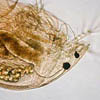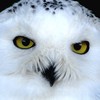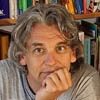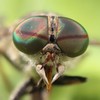






Klaus F. Steiner's scientific ventures
Welcome to the homepage for my scientific interests and contributions!
Why this website? Well, I'm passionate about science. Around 1990 I studied biology and a bit of mathematics and philosophy here in Graz, Austria. For my diploma thesis, I modeled and simulated the song interactions of bushcrickets. Instead of doing a dissertation, however, I ended up in software development and I am still employed today. For several years now, I have also been running a small puzzle company together with my wife Karin. We have thus turned our shared enthusiasm for puzzles and brain games into a sideline.
My inordinate fondness for biology has remained, even though my approach is playful rather than scientific. I keep insects, build formicariums, microscope, watch and photograph what crawls and flies. However, my most intense and serious approach to biology is of theoretical nature and with the help of my favorite tool to gain knowledge, the computer. I have created numerous computer models, mainly from evolutionary biology, and experimented with them. Now I came across a few things that seem remarkable to me and that I would like to report on. This page is the guide for that.
2024
Altruism pays off in group-structured populations
Preprint: https://biorxiv.org/cgi/content/short/2024.01.20.575560v1
The evolution of altruistic traits is a Darwinian puzzle that has not yet been satisfactorily solved. Using cost-benefit analyses and multi-agent simulations, I show here that there is a clear fitness advantage for the altruists in a mixed population of altruists and egoists if some conditions are met.

| Supplementary simulation program that runs online in your browser
This multi-agent simuation shows the dynamics of altruistic cooperators (C, cyan dots) and defectors (D, yellow dots) in a group-structured population. It demonstrates the basics of the processes and mechanisms described in the paper. |
2021
The Good, the Bad and the Stochastic: How Living in Groups Innately Supports Cooperation
Preprint: bioRxiv 2021.02.21.431661; doi: https://doi.org/10.1101/2021.02.21.431661Based on theoretical considerations and computer simulations, I show that living in groups brings advantages for cooperative traits through purely stochastic effects that result from the division of a population into groups. These advantages can be sufficient to compensate individual selection pressures that may be associated with the cooperative traits. In more complex agent-based simulation models, this effect combined with some migration between the groups leads to stable dynamic equilibria between cooperative and defective replicators in the population.
Supplementary simulation programs

|
payoff_CD_deviation: download NetLogo simulation or open HTML simulation in browser
Simulation of trait payoffs for different variances of the groups consisting of cooperators (C) and defectors (D). It was used for the data in figure 4. See "Model Info" (below the model) for details. | |

|
groupingSimCD:
download NetLogo simulation or open HTML simulation in browser
Multi-agent simulation of trait evolution in groups of cooperators (C) and defectors (D) as used for figures 5-9. At the first time click "Setup" and then "Go", and a simulation starts. To stop click "Go" again. See "Model Info" (below the model) for details. |
Last modified: January 24, 2024
Contact
Klaus F. SteinerKrottendorfer Straße 70, 8052 Graz, Austria
E-Mail: ksteiner@vinckensteiner.com
I also maintain the website Vinckensteiner Rätsel und Denkspiele with puzzles and brain teasers (mainly in German, but with portions in English and Spanish) and the evolution page for kids Evolution in Aktion (in German).






